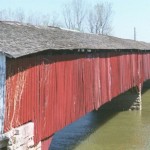In May 2009, the Indiana Department of Natural Resources closed Indiana caves, sinkholes, tunnels and abandoned mines to the public. Although disappointing for would-be spelunkers, the enforced closure was a preemptive measure to protect the Indiana bat (Myotis sodalis).
No more than two inches long, and weighing a quarter-ounce, the dull grey bat’s habitat ranges across the Eastern United States. The total number of Indiana bats declined by 50 per cent from 1985 to 2010. Almost a quarter of this endangered population spends its winter hibernating in caves in Indiana.
The Hoosier State’s ample bat habitat is a function of its geological heritage and industrial history. The karst topography of southern Indiana is characterized by sinkholes and caves carved by groundwater seeping through soluble limestone.
Many of the state’s other underground rooms and tunnels are man-made vestiges of its once-booming mining industry. Although most of Indiana’s deep-shaft coal mines were abandoned by the 1950s, bats seek out the dark, cool spaces as hibernacula.
In 2007, the already endangered bat encountered an additional challenge. A lethal disease spread by a fungal pathogen was decimating a variety of bat species in the Northeast and Appalachian states. Bats with white nose syndrome fail to thrive, and develop a white residue on their heads and wings.
Although white nose syndrome had not been reported in Indiana at the time of the closure, limiting human access to bat habitat may support the bat’s fragile life cycle.






















